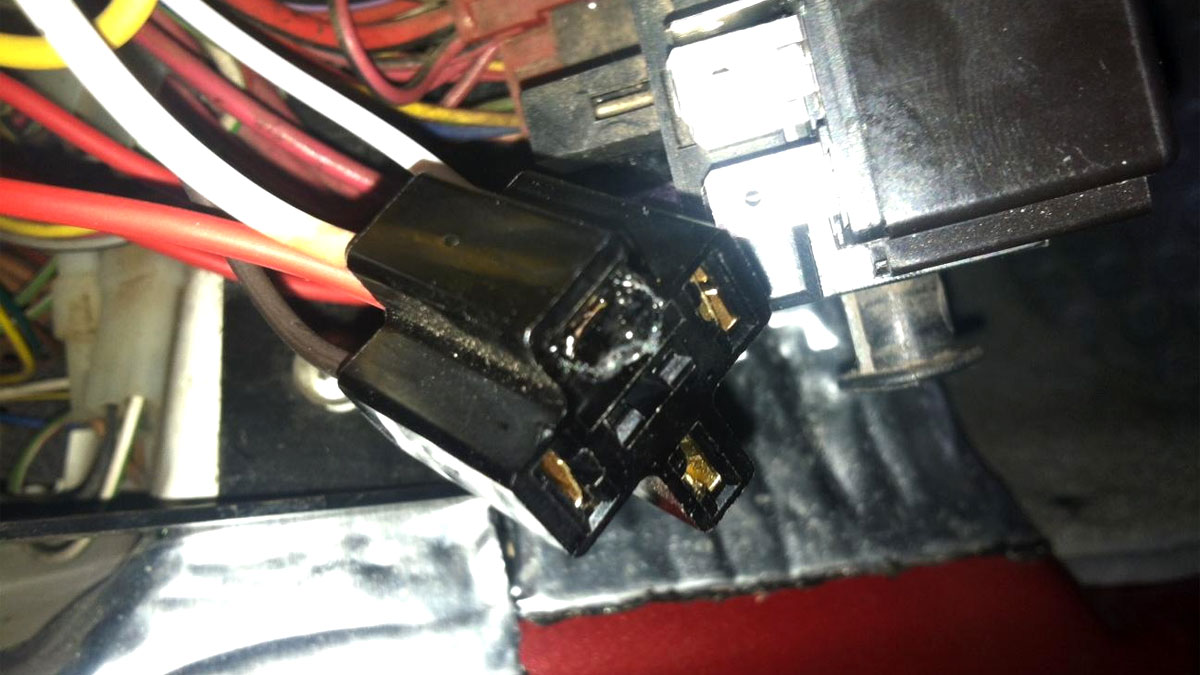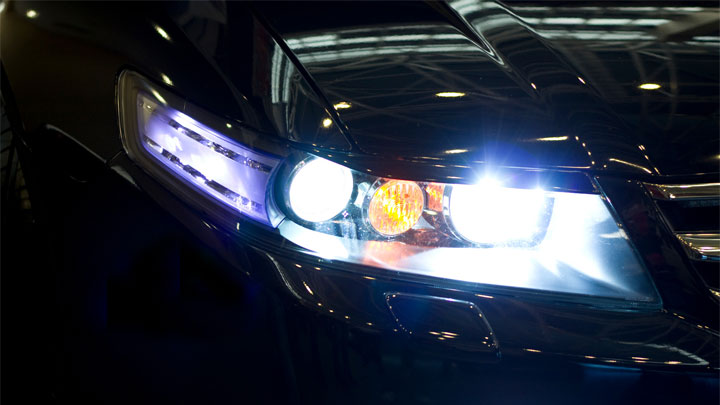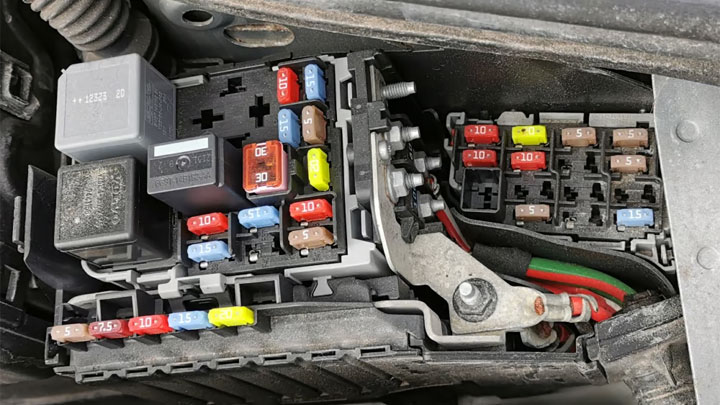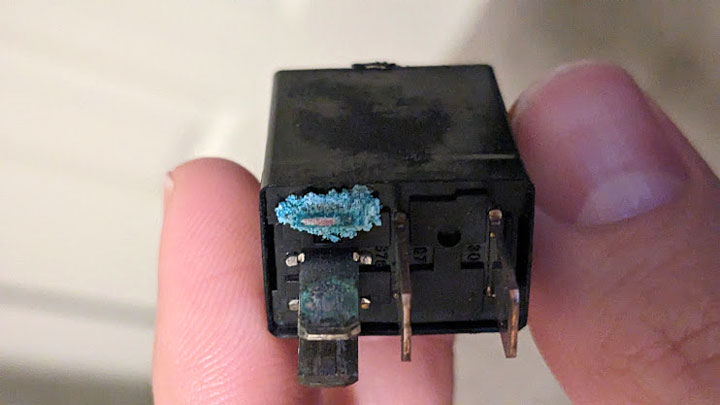4 Symptoms of a Bad Headlight Relay (and Replacement Cost)
When headlights mysteriously stop working, a faulty relay is often the culprit. This small but critical component controls power flow to the headlight circuit.
Learn the warning signs of a bad headlight relay, common causes of failure, and how much it’s going to cost to replace the relay. Skip making a service appointment on this one and replace it yourself!

Bad Headlight Relay Symptoms
A bad headlight is often associated with a number of secondary symptoms, some of which tend to be quite apparent. Learning to recognize these symptoms can prove quite valuable when attempting to quickly diagnose and remedy the issue at hand.
The following are several of the most common symptoms associated with a faulty headlight relay.
Related: 3 Signs of a Faulty Turn Signal Relay
#1 – No Low or High Beams

The most common symptom associated with a faulty headlight relay is a lack of high or low beam lights. However, the opposite headlight setting will often function flawlessly. This stems from the fact that most vehicles feature a separate relay for each particular light setting.
#2 – Intermittently Functioning Headlights
When a headlight relay first begins to fail, it is not uncommon for a single headlight setting to not function one day, only to function flawlessly the next. However, in most cases, such issues will only worsen with time, until the headlight function is eventually lost.
#3 – Headlights Stay On

Though somewhat less common of an issue, a faulty headlight relay can actually stick in the closed position, thereby causing a vehicle’s headlights to stay illuminated in either the high or low beam setting at all times.
#4 – Erratic Pop-Up Headlight Operation
Though increasingly rare, a number of vehicles on the road today still feature covered (pop-up) headlights, with lids that retract when the headlights themselves are illuminated. The 2004 Corvette may have been the last vehicle with hidden headlights but other cars that had this feature include the Mitsubishi Eclipse, BMW 8-Series, Mazda RX-7, and Nissan 300ZX
Since this light/lens combo often utilizes a single relay, the headlight cover function can become erratic when a headlight relay starts to fail.
What Does a Headlight Relay Do?
A headlight relay serves as a switching device of sorts, governing the power distribution within a vehicle’s headlight circuit.
- When closed, a headlight relay delivers fused power downstream to the headlights themselves.
- When open, a headlight relay cuts power flow across the affected circuit, preventing power from reaching both front headlights, and making illumination impossible.
One significant advantage to the use of a relay within a vehicle’s headlight circuit is that doing so takes the vast majority of the circuit’s load potential off of the headlight switch itself.
This, in turn, prevents premature headlight switch failure, as the switch itself is only left to control the control wiring to the coil side of the relay itself. A relay, in turn, also serves as a valuable circuit protection device of sorts.
See Also: HID vs LED vs Laser Headlights Comparison
Where is the Relay Located?

In most instances, a vehicle’s headlight relay will be found within the underhood power distribution panel (aka: the fuse box). An additional fuse box may be located in the driver’s side foot well, glove box, or other interior location. But these locations typically don’t house the headlight relay.
The underhood panel is typically located to the far left or right hand margin of the engine bay, and is often rectangular in shape, featuring a pop-on or twist-lock style lid. Upon removing the power distribution panels lid, a number of fuses and relays will be exposed.
The vast majority of power distribution panels feature basic prints on the underside of their lids, which label the location of each individual fuse and relay. Knowing this, one can quickly determine which relay to check.
Alternatively, much of this information can also be found in a vehicle’s owner’s manual or a good model-specific repair manual. Once located, the headlight relay can be felt to see if it is clicking when the headlight switch is activated, to assist in the diagnostic process.
What Causes a Headlight Relay Switch to Fail?

Headlight relays fail for a number of reasons, though typical wear and tear is often the culprit. Since a relay operates much like a switch, repeatedly making and breaking circuit continuity, its internal contacts are prone to a certain degree of arcing.
Over time, this arcing has the tendency to erode contacts, leaving behind a flux-like substance that can impede proper function. The internal coil portion of a relay can also weaken or fail with age.
Another common cause of headlight relay failure is water intrusion into a vehicle’s power distribution panel. This moisture has the potential to short a relay out across its poles or to corrode a relay’s individual pins.
Additionally, headlight relay failure can also be caused by prolonged periods of low voltage operation within the headlight circuit, such as that which is presented by a slowly failing battery.
Headlight Relay Replacement Cost
Best places to order parts? See: 19 Best Online Auto Parts Stores

The matter of replacing a vehicle’s headlight relay is easily tackled by even the most mechanically inexperienced of motorists. For this reason, there is little reason to have such an issue professionally repaired. This, of course, is good news, as this mitigates any associated labor costs that would be incurred during any other type of non-DIY repair.
Generally speaking, most headlight relays can be purchased for less than $25 at most any local or online auto parts store, making headlight relay replacement a relatively cost effective repair. Additionally, headlight relays for almost every make and model of vehicle are readily available, being stocked at most every chain-type auto parts store.
- P0480 Code (Symptoms, Causes, and How to Fix) - Apr 19, 2024
- Car Temperature Gauge Stopped Working? (Here’s Why) - Apr 15, 2024
- Ignition Coil vs Coil Pack (What’s the Difference?) - Apr 8, 2024
